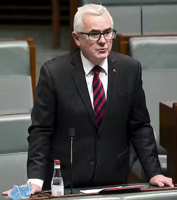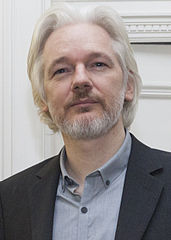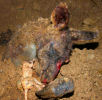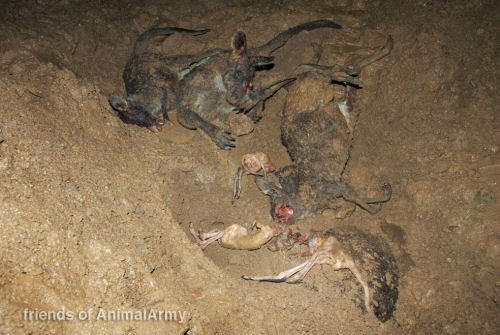 Something very shonky is going on in Canberra with unjustified massacre of kangaroos. As the previous blog mentioned, no science to back it up.
Something very shonky is going on in Canberra with unjustified massacre of kangaroos. As the previous blog mentioned, no science to back it up.
Learn some more facts and take action! We can only stop this if lots of people take action!
Two years ago the Canberra Environment and Sustainability Resource Centre wrote a compelling document explaining how kangaroos help the environment in so many ways. It was written at a time when another big cull was being decided so of course Maxine Cooper, the Commissioner for the Environment, ‘culled’ the document and demanded return of funds paid to CESRC, and the document can now only be found online at http://www.nokangaroomeat.org
And here we go again! It’s that time of the year boys and girls, when the shooters get out their guns and have a shooting spree till the end of June and wipe out thousands of beautiful, healthy, environmentally friendly, gentle kangaroos and their babies, the national icon we are all so proud of that we put its image on our aeroplanes, on logos ‘Proudly Australian Made’ and title our best rugby teams. (See http://candobetter.net/node/2063 )
Science or Fun?
Yet we also ‘humanely’ (of course) shoot the females, bash the offspring to death or chop off its still living head or leave the at-foot joeys orphaned to die alone, cold, hungry and afraid without their mother’s love and protection. And why? So we can feed to our dogs naturally. Also for fun.

Precious joeys like these will be bashed to
death or left to starve, broken hearted
In this case, it’s just for fun. Why? Because there is no science to back up these ‘culls’.
Daniel EIglesias from ACT Parks and Conservation talks about a kangaroo population ‘explosion’ within Canberra’s Nature Reserves. He says up to 3,427 kangaroos will be shot.
He says that ACT Parks has calculated the numbers by ‘sitting back and thinking how many kangaroos can these areas sustainably manage so we can have a healthy population of kangaroos, but also healthy populations of other animals.’
How incredibly scientific of them. I think nature has a way of balancing out populations very nicely, thank you Mr Iglesias, without man’s interference. In fact, every time man interferes, he ‘stuffs up’. Ever wonder why Australia has the worst reputation in the world for mammal extinctions sir? It’s because of government departments like yours, sitting comfortably back and playing God, rearranging the pawns in the game of Wildlife versus Man.
He goes on without giving any evidence so far of actual kangaroo numbers in the parks or any evidence of certain species being ‘threatened’ by kangaroos. He’d be hard pressed to come up with any proof like that, considering that kangaroos have been living in harmony with other species for up to 16 million years.
In fact, according to that report by the Canberra Environment and Sustainabillity Resource Centre, kangaroos help many species to survive, quite the reverse.
After that he expresses concern that grasslands and woodlands could be overgrazed by kangaroos, again with no evidence that it is happening, or in fact, has ever happened. There is no evidence, anywhere, of that. It’s all just a big myth.
And then he maligns our poor kangaroo for ‘soil loss’. Our soft-padded native kangaroo, creates soil loss. What about introduced feral livestock with hard hooves, wouldn’t they cause soil loss? Indeed, but they are off ACT Parks’ radar.
Parks assures us that while the cull is higher this year than last not to worry because it isn’t too many compared to the general kangaroo population. Is Iglesias comparing the numbers of kangaroos to be killed in Canberra’s Nature Reserves to the total numbers there or is he comparing numbers to be killed to the total kangaroo population of Australia?
No matter how good a year they have had, what with rainfall etc, each kangaroo can only give birth to one per year and of those born there is an 80% attrition rate, meaning only 20% survive. So it’s not like their population can double in 12 months. Besides the new kangaroos are still only joeys, 12 months old and dependent on their mothers. That means this year’s ‘cull’ will be primarily the killing of joeys since the ones not killed the previous year who are approaching 2 years of age are still not adults and only just independent of their mothers.
Media Links
How sad and shameful. Read the media release at:-
http://www.abc.net.au/news/stories/2011/06/02/3233396.htm
http://www.canberratimes.com.au/news/local/news/general/annual-cull-targets-3427-roos/2183173.aspx
http://canberra.iprime.com.au/index.php/news/prime-news/up-to-3427-kangaroos-to-be-culled
Express your outrage
Hard questions need to be asked. For example:-
1. Has there been an official count of kangaroo populations on the six reserves where the killing is to take place?
2. Where is the proof and how did they arrive at the numbers?
3. Since the quota is 75% of the total estimated populations (3,427 out of 4,482), and since last year was a drought, where is the precautionary principle in action?
4. What if there is a drought next year (or any other disaster or epidemic disease which kangaroos suffer from) and you wiped out 75% last year, how can that be regarded as sustainable especially when the commercial quota is only 15-20%?
4A. Did you forget about the high to extreme risk or even certainty of a cascading of extinctions of various endangered species (insects, lizards etc.) if all kangas were removed altogether? Kangaroos are considered a keystone species in the ecosystem, that all other species relied upon for reasons relating to kangaroo dung. This means that if Parks "overshoot" with their killing total estimates and end up leaving no kangaroos in a particular area, that is likely to have a devastating impact on the species reliant upon the kangas' presence, including the endangered ones.
5. While kangaroos have lost their natural predator, the dingo, they now have a much more formidable predator i.e. humans (via habitat loss, feral dogs, foxes, barbed wire fences, cars, farmers with guns, hoons) and that is not even counting bushfires and drought. Why is Parks not factoring this in?
6. If there is no overgrazing by kangaroos and overgrazing causes loss of habitat and soil, why the concern for endangered species now or into the future? Don Fletcher's thesis clearly shows that there is no relationship between kangaroos and overgrazing, so kangaroos endangering species is a myth.
7. Why isn't Parks ACT introducing fertility controls (such as at Belconnen in 2008) or relocation.
8. Why aren't there wildlife corridors to help kangaroos move on should there be no more food for them in the future? If they could move out, there would never be a need for killing or relocating them.
9. What is the cost (yes the public is entitled to know) of shooting 3,500 kangaroos?
10. Will you be killing the in-pouch joeys or throwing them live into the pits with their dead mothers?
11. Will orphaned and bashed joeys be included in the death count?
12. Has there been any factoring in for kangaroos who will die from stress myopathy in coming weeks as a result of watching their families get murdered and fleeing in terror?
13. Would Parks ACT be willing to consider an urgent quote for relocation of the 'surplus' kangaroos?
14. Are livestock allowed to graze on Parks and Lands properties? If so, wouldn't that be more of a concern with regard to soil loss and overgrazing?
15. Has Parks ACT given any consideration to the effect of their 'culls' on wildlife-loving Australians, many of whom are right now unable to sleep or eat, suffering from depression and anger because of this 'cull'? What else would drive them to leave the comfort of their homes at night in sub-zero temperatures to go to the Nature Reserves and try to intervene, risking not only their health but also their lives (in case they are shot) and potentially their police records and finances (in case they are charged and fined)?
Contact the following:-

* [email protected] (Office of the Commissioner for Sustainability + Environment)
* [email protected] (Project Co-ordinator, Mulligans Flat Woodland Sanctuary)
* [email protected] (Chair – Steering Committee, Conservation Parks + Lands)
* [email protected] (Member of Parks and Lands)
* [email protected] (Member of Parks and Lands)
* [email protected] (Member of Parks and Lands) (02) 62 071-911
* [email protected] (Dr Tony Peacock, CRC for Biological Control of Pest Animals) 02 62 725 525
* [email protected] (Dr David Shorthouse, Member Parks ACT, Visiting Fellow ANU - 02 61-250 663)
* [email protected] (Dr Penny Olsen, ACT Flora and Fauna Committee Representative 02 61 252-536)
* [email protected] (Dr Adrian Manning, ANU, member Parks ACT 02 61 255-415)
* [email protected] (ACT Minister for the Environment, Simon Corbell MLA)
* [email protected] (ACT Chief Minister – Katy Gallagher)
http://www.pm.gov.au/contact-your-pm (PM Julia Gillard)
* [email protected] (Federal Minister for Environment, Tony Burke)
* [email protected] (RSPCA endorses all ACT culls)
*****
Or better still, go to Canberra and be present to watch and document the sordid massacre of our country’s national icon and their babies. That is one thing the killers hate, to be watched doing their dirty deeds. You might even be called to a protest. I hope there will be a huge one in Canberra one day, the sooner the better, with thousands of people rallying against the largest slaughter of land-based wildlife on the planet - i.e. kangaroos.
GETUP PETITION:
Please vote for the kangaroos. You can use up to 10 votes per issue. At present kangaroos are at #79 so we need more votes. Please get the word out to your friends. Thanks.
http://suggest.getup.org.au/forums/60819-campaign-ideas/suggestions/1142043-stop-the-shocking-cruelty-in-the-kangaroo-trade?ref=title
 Sunday, 20 July 2025 : National Rally at Parliament House. Monday, 21 July 2025: National campaign planning day. Tuesday, 22 July 2025: Rally at Parliament House on the opening day of Parliament
Sunday, 20 July 2025 : National Rally at Parliament House. Monday, 21 July 2025: National campaign planning day. Tuesday, 22 July 2025: Rally at Parliament House on the opening day of Parliament
 Good evening. Earlier this evening, earlier today in a courthouse in Saipan, we had a hearing that brought to a close a prosecution that never should have been brought.
Good evening. Earlier this evening, earlier today in a courthouse in Saipan, we had a hearing that brought to a close a prosecution that never should have been brought.
 In an 8 minute interview
In an 8 minute interview 
 Both houses of the Australian parliament, the House of Representatives and the Senate, are meeting tomorrow, Tuesday 6 February 2024 (Update, Wednesday 9:56am: nothing said about Gaza on Tuesday). Based on past experience, if the Gaza conflict, in which, so far, nearly 27,000 Palestinian civilians are known to have been killed, is to be discussed, there has to be a Suspension of Standing orders. Should any debate occur, most of the Labor government members will just state, as fact, many of the lies from the Israeli and Corporate/Legacy newsmedia, whilst feigning concern for the plight of Palestinian civilians. The Liberal/National Opposition, for its part, will wholeheartedly support Israel's action and show almost no concern for the Palestinian civilians.
Both houses of the Australian parliament, the House of Representatives and the Senate, are meeting tomorrow, Tuesday 6 February 2024 (Update, Wednesday 9:56am: nothing said about Gaza on Tuesday). Based on past experience, if the Gaza conflict, in which, so far, nearly 27,000 Palestinian civilians are known to have been killed, is to be discussed, there has to be a Suspension of Standing orders. Should any debate occur, most of the Labor government members will just state, as fact, many of the lies from the Israeli and Corporate/Legacy newsmedia, whilst feigning concern for the plight of Palestinian civilians. The Liberal/National Opposition, for its part, will wholeheartedly support Israel's action and show almost no concern for the Palestinian civilians.
 I emailed the following to Independent Tasmanian MP Andrew Wilkie and to a number of other members of the Bring Julian Assange Parliamentary Support Group on the evening of Monday 12 June, the day before the 13 June resumption of the sitting of both the House of Representatives and the Senate. How you can help : Contact your local Member of Parliament, your state Senators or members of the
I emailed the following to Independent Tasmanian MP Andrew Wilkie and to a number of other members of the Bring Julian Assange Parliamentary Support Group on the evening of Monday 12 June, the day before the 13 June resumption of the sitting of both the House of Representatives and the Senate. How you can help : Contact your local Member of Parliament, your state Senators or members of the  Included below is an example of the letters I sent late in the evening of Monday 27 March to each of the 40 members of the Bring Julian Assange Home Parliamentary Support Group. I point out that, in spite of its size, the efforts of this group so far appear to have made little difference towards making the Albanese government act to end the UK's illegal imprisonment of Assange or even to just hold this government to account for its failure to do so.
Included below is an example of the letters I sent late in the evening of Monday 27 March to each of the 40 members of the Bring Julian Assange Home Parliamentary Support Group. I point out that, in spite of its size, the efforts of this group so far appear to have made little difference towards making the Albanese government act to end the UK's illegal imprisonment of Assange or even to just hold this government to account for its failure to do so. Canberra Conversations SUNDAY 19 March 2023 AT 3:30 PM – 5:30 PM Smith's Alternative, 76 Alinga Street, Canberra, ACT, Australia, Australian Capital Territory. 3 speakers plus forum.
Canberra Conversations SUNDAY 19 March 2023 AT 3:30 PM – 5:30 PM Smith's Alternative, 76 Alinga Street, Canberra, ACT, Australia, Australian Capital Territory. 3 speakers plus forum. Join us - rally, say No to War – protect truthtellers 8am Monday 20th March at the ACT Courts. On the 20th anniversary of the illegal invasion of Iraq, and as the Coalition of the Willing which was responsible for the illegal invasion of Iraq on 20 March 2003 has regrouped as AUKUS, we should remember the legacy of that disastrous war and other destructive wars. (Reposted from
Join us - rally, say No to War – protect truthtellers 8am Monday 20th March at the ACT Courts. On the 20th anniversary of the illegal invasion of Iraq, and as the Coalition of the Willing which was responsible for the illegal invasion of Iraq on 20 March 2003 has regrouped as AUKUS, we should remember the legacy of that disastrous war and other destructive wars. (Reposted from 



 This article points to the utter failure of Australia's parliamentary system to deal with Julian Assange's predicament and the associated public concern.
This article points to the utter failure of Australia's parliamentary system to deal with Julian Assange's predicament and the associated public concern.
 The Australian Wildlife Protection Council (AWPC) was able to help citizen advocates generate a groundswell of public awareness and fight-back in June and July 2022 against the now annual ‘cull’ in Canberra of the kangaroo (our icon holding up one side of the federal coat-of-arms). Whole kangaroo families are shot behind suburban backyards — for reasons that remain unclear despite government blame-the-victim narratives — on nature reserves in the national capital.
The Australian Wildlife Protection Council (AWPC) was able to help citizen advocates generate a groundswell of public awareness and fight-back in June and July 2022 against the now annual ‘cull’ in Canberra of the kangaroo (our icon holding up one side of the federal coat-of-arms). Whole kangaroo families are shot behind suburban backyards — for reasons that remain unclear despite government blame-the-victim narratives — on nature reserves in the national capital. One fact, apparently not properly appreciated amongst the vast popular movement in support of Julian Assange, both in Australia and overseas, is that, in spite of the fact that the Government of Prime Minister Anthony Albanese could make the British Government release Julian Assange today, it has chosen not to.
One fact, apparently not properly appreciated amongst the vast popular movement in support of Julian Assange, both in Australia and overseas, is that, in spite of the fact that the Government of Prime Minister Anthony Albanese could make the British Government release Julian Assange today, it has chosen not to. Title was South Australia's Parliament to debate Julian Assange's plight this coming Wednesday - Why won't Canberra? Update, Sun 6 Nov 2022: Parliament will be sitting Monday, Tuesday, Wednesday and Thursday this coming week.
Title was South Australia's Parliament to debate Julian Assange's plight this coming Wednesday - Why won't Canberra? Update, Sun 6 Nov 2022: Parliament will be sitting Monday, Tuesday, Wednesday and Thursday this coming week. No sign of Anthony Albanese at this brilliant event, although we know he was in parliament.
No sign of Anthony Albanese at this brilliant event, although we know he was in parliament. Update, Tue 26 July: A new larger PDF file which includes a duplicate of the first double-sided A5 page has been uploaded. Without this addition, the second page will be blank. I am about to find out if the problem is fixed. My apologies.
Update, Tue 26 July: A new larger PDF file which includes a duplicate of the first double-sided A5 page has been uploaded. Without this addition, the second page will be blank. I am about to find out if the problem is fixed. My apologies.

 ACT Parks and Conservation Service director Daniel Iglesias said these kangaroo "culls" would only occur ''every now and then'' to bring the number of kangaroos down to a sustainable level to vaccinate to control fertility.
ACT Parks and Conservation Service director Daniel Iglesias said these kangaroo "culls" would only occur ''every now and then'' to bring the number of kangaroos down to a sustainable level to vaccinate to control fertility.
 Mulligan's Flat with Kangaroo group
Mulligan's Flat with Kangaroo group
 Why is a national organisation standing for 'all creatures great and small' supporting an annual and bloody kangaroo 'cull' in Nature Reserve Parks in Canberra, of all places? Aren't Nature Reserves supposed to be a place for all creatures to feel safe and protected? You have to wonder how an animal protection organisation can stand by and say nothing about the egregious cruelty for no justifiable reason, year after year. Do they think the public is so stupid as to believe the lies that kangaroos 'overgraze' and are a threat to other species?
Why is a national organisation standing for 'all creatures great and small' supporting an annual and bloody kangaroo 'cull' in Nature Reserve Parks in Canberra, of all places? Aren't Nature Reserves supposed to be a place for all creatures to feel safe and protected? You have to wonder how an animal protection organisation can stand by and say nothing about the egregious cruelty for no justifiable reason, year after year. Do they think the public is so stupid as to believe the lies that kangaroos 'overgraze' and are a threat to other species?
 These photographs of a mass-burial pit in Canberra for kangaroos gunned down by the government was sent to me by 'Friends of AnimalArmy' with the message, "We cannot find an investigative journalist anywhere who will expose the corruption and the lies." I cannot understand why not. Don't we want to know the truth?
These photographs of a mass-burial pit in Canberra for kangaroos gunned down by the government was sent to me by 'Friends of AnimalArmy' with the message, "We cannot find an investigative journalist anywhere who will expose the corruption and the lies." I cannot understand why not. Don't we want to know the truth?




 "Canberra's Nature parks will be closed tomorrow for a "cull" of Eastern Grey Kangaroos. About 2000 are to be slaughtered for a "sustainable" number, to protect the flora and fauna. Polls of about 600 residents reveal that 79% of the city want the killings to go ahead. It's ironical that 9 "Nature" parks will be closed, under that assumption that kangaroos are not part of Nature and a threat to conservation efforts and sustainability.
"Canberra's Nature parks will be closed tomorrow for a "cull" of Eastern Grey Kangaroos. About 2000 are to be slaughtered for a "sustainable" number, to protect the flora and fauna. Polls of about 600 residents reveal that 79% of the city want the killings to go ahead. It's ironical that 9 "Nature" parks will be closed, under that assumption that kangaroos are not part of Nature and a threat to conservation efforts and sustainability.
 Something very shonky is going on in Canberra with unjustified massacre of kangaroos. As the previous blog mentioned, no science to back it up.
Something very shonky is going on in Canberra with unjustified massacre of kangaroos. As the previous blog mentioned, no science to back it up.
 How our taxes are used in hospitals and other prevention and treatment modalities is of almost as much importance as how our access to shelter and food are or are not guaranteed by our political systems. The Public Health Association of Australia has a broad interpretation of public health and is thus interested in population policy and housing. It is important to support the PHAA to influence public policy in all of these areas. The Association has a network throughout Australia, in rural and urban areas. As such it is among several organisations which has some potential to combat aspects of the property and finance based Growth Lobby in Australia.
How our taxes are used in hospitals and other prevention and treatment modalities is of almost as much importance as how our access to shelter and food are or are not guaranteed by our political systems. The Public Health Association of Australia has a broad interpretation of public health and is thus interested in population policy and housing. It is important to support the PHAA to influence public policy in all of these areas. The Association has a network throughout Australia, in rural and urban areas. As such it is among several organisations which has some potential to combat aspects of the property and finance based Growth Lobby in Australia. The purpose of this cull is to 'maintain kangaroo populations at appropriate levels to protect the integrity of ecosystems, several of which contain endangered flora and fauna such as Grassland Earless Dragon, Golden Sun Moth, Striped Legless Lizard, Perunga Grasshopper and threatened plants such as the Button Wrinklewort (a perennial herb).'
The purpose of this cull is to 'maintain kangaroo populations at appropriate levels to protect the integrity of ecosystems, several of which contain endangered flora and fauna such as Grassland Earless Dragon, Golden Sun Moth, Striped Legless Lizard, Perunga Grasshopper and threatened plants such as the Button Wrinklewort (a perennial herb).'

 It's time the ACT government was challenged on their view that kangaroos overgraze (their own literature shows that kangaroos only have 1-8% grazing pressure compared to sheep and cows - http://www.environment.gov.au/soe/2006/publications/drs/indicator/162/index.html )
It's time the ACT government was challenged on their view that kangaroos overgraze (their own literature shows that kangaroos only have 1-8% grazing pressure compared to sheep and cows - http://www.environment.gov.au/soe/2006/publications/drs/indicator/162/index.html )
Recent comments